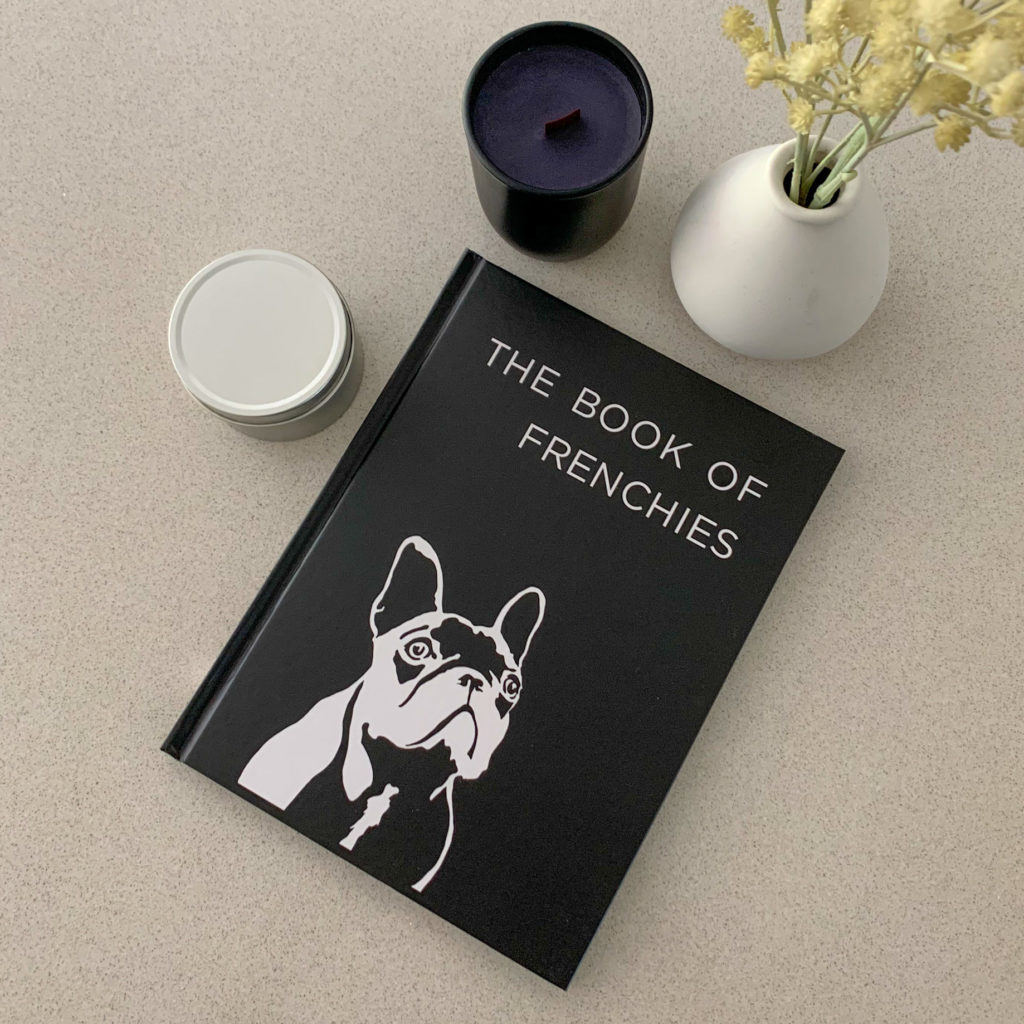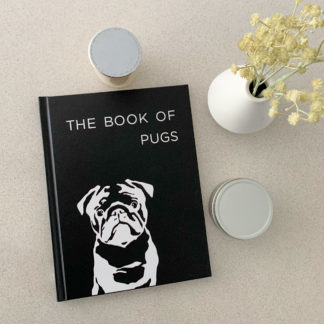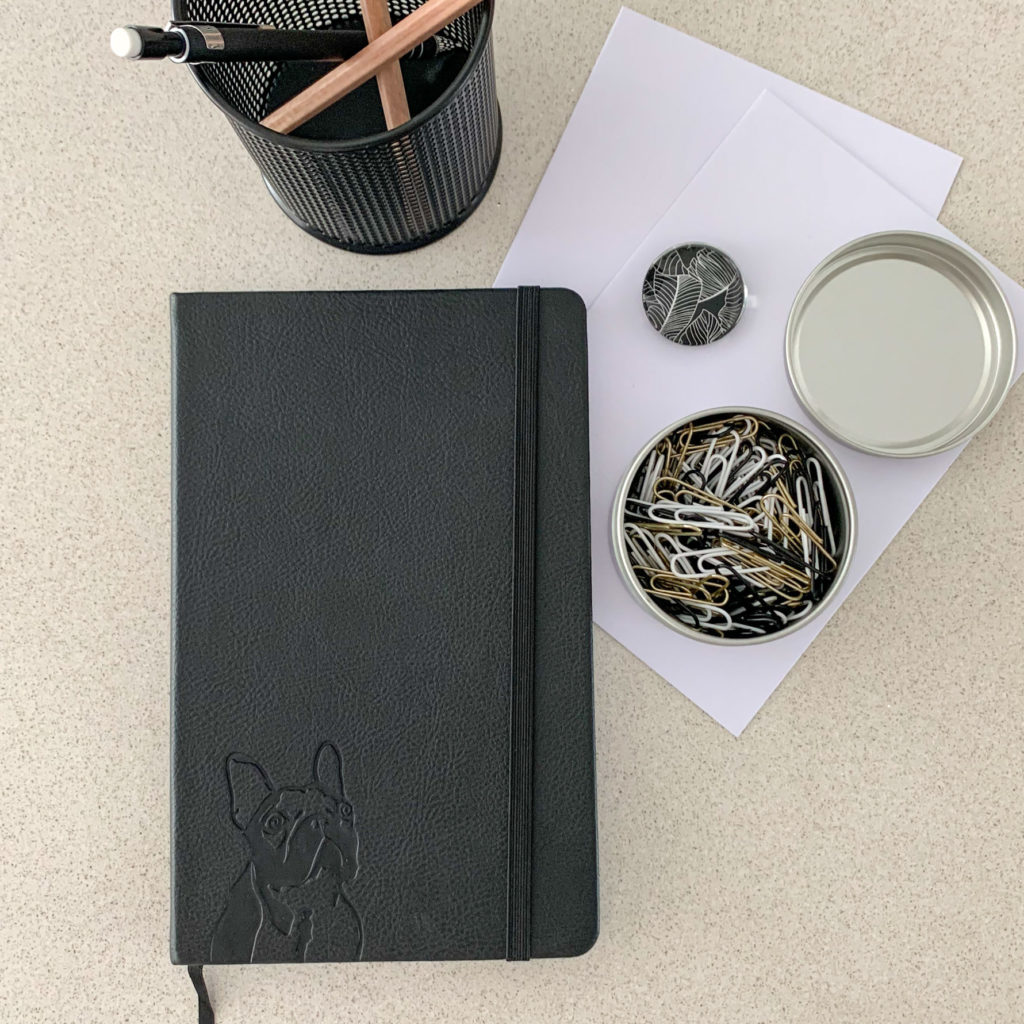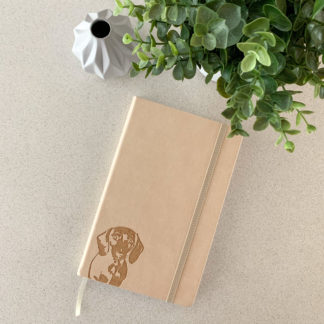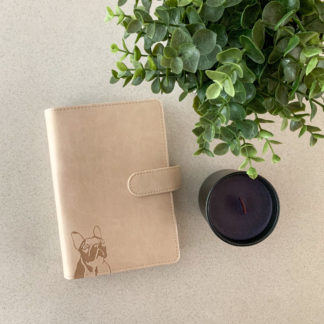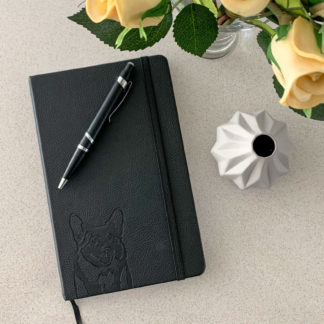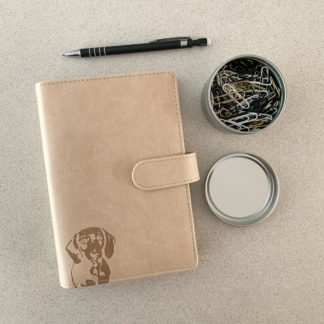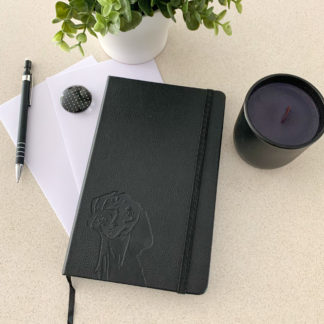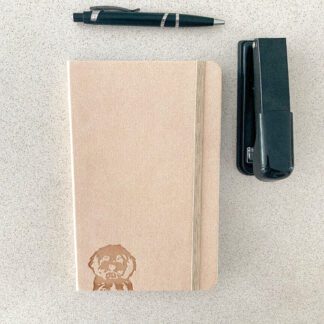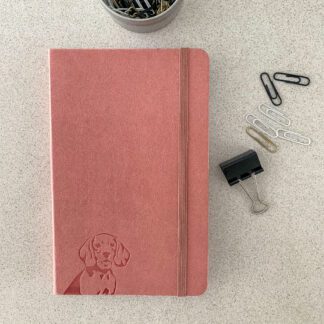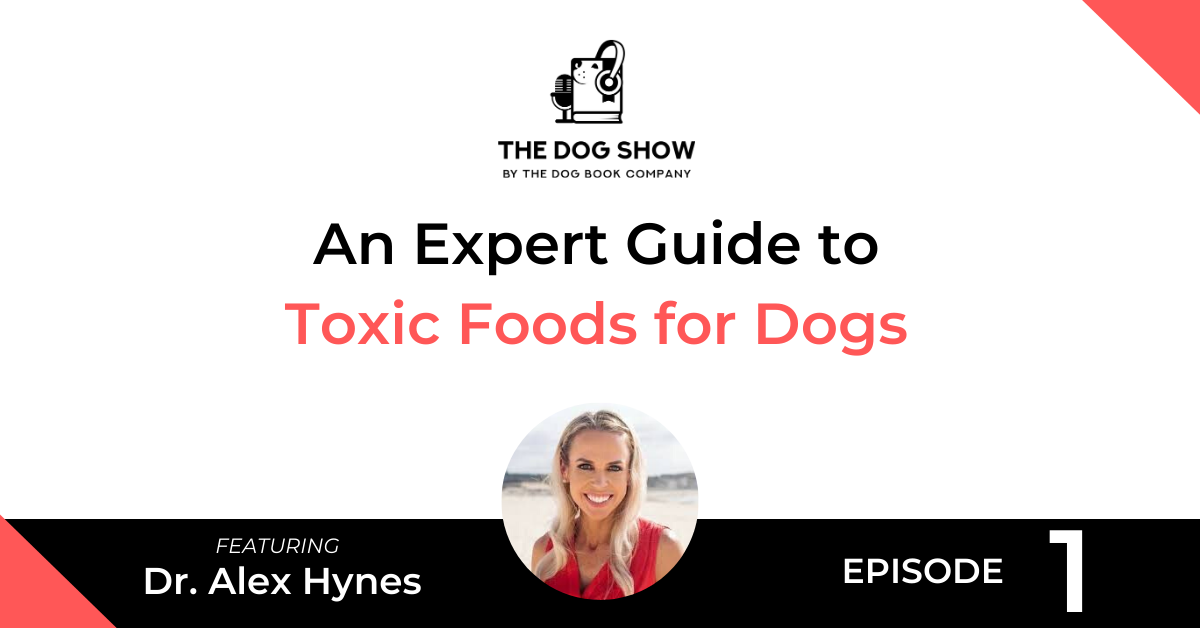
Ever wondered which foods are toxic for your dog?
This episode of The Dog Show features Dr. Alex Hynes. Alex is a Veterinarian, Author, and Educator with an extraordinary passion for animals. She is the hospital director of one of Australia’s busiest emergency pet hospitals, author of the emergency care book “First Call For Dogs”, and one of the stars of the popular TV show; Bondi Vet: Coast to Coast.
In the interview, we discuss the importance of understanding which foods are toxic for dogs, what to do if your dog has eaten something they shouldn’t have, and some bonus tips on keeping your dog safe from toxic foods.
Listen
Watch
Read
Will: Welcome to the Dog Show. In this episode, I interview Dr. Alex Hynes. Alex is a veterinarian, an author and an educator with an extraordinary passion for animals. She’s the Hospital Director of one of Australia’s busiest emergency pet hospitals, the author of the emergency care book, “First Call for Dogs,” and one of the stars of the popular TV show, “Bondi Vet Coast to Coast.” In the episode we talk about the importance of understanding which foods are toxic for your dog, what to do if your dog ate something it shouldn’t, and some bonus tips on keeping your dog away from those toxic foods. I certainly learned a huge amount from this episode and I hope you do too. Alex Hynes, thanks so much for coming on the podcast here at “The Dog Show.”
Alex: Thank you so much for having me. It’s great to be here.
Will: So I thought we’d start off with something nice and light. You’re obviously working as an Emergency Vet and dealing with dogs all the time. But you also have a dog of your own, Yoshi, I believe?
Alex: Yeah. Yoshi. Yep.
Will: Yoshi is a Samoyed, is that right?
Alex: Yeah. He’s keeping an eye on me. He heard his name. Yeah, he is a Samoyed. I’ve had him, gosh, for a number of years. I got him as an adult dog because I didn’t want a puppy. And actually, surprisingly, Samoyeds come up for adoption quite a lot because people don’t, you know, that incredibly cute little white balls of fluff and people don’t realize they’re high maintenance dogs with that beautiful white fluffy coat. Saw him, fell in love with him and it’s been a great relationship ever since.
Will: Something I’ve always been interested with that breed of dog is, especially in Australia, which is a hot climate, how do they handle the heat with so much fur and all that kind of stuff? Or is that…I don’t know, is there something I don’t know about the way they’re designed that it actually just works well?
Alex: No. Look…you’re absolutely right. I live in Queensland, obviously, which is one of the hotter parts of Australia and I really have to be quite careful with him not becoming overheated. They’re really not designed for Queensland. A lot of people think they come from Japan, they actually come from Russia. So they’re an Arctic climate dog with a thick double coat. And so to live in a country like Australia, if you have one, you really take on the responsibility of making sure that they’re kept cool. And so he does spend a fair bit of time out, like in the air con…in the air conditioning. And in the middle of summer, if I want to take him for a walk, it’s always sort of, you know, before the sun gets up or in the evening and it’s always short. So nothing special about them in terms of the way, in terms of keeping them cool, but it is really, really important because they do overheat very easily, like with any of the Arctic breed, Huskies, all that sort of thing. So, yeah.
Will: Interesting because I noticed as well that you like exercising, you…I think you’ve run a marathon before or you run quite a lot. So I imagine you can’t take him running or with you?
Alex: No, look, sometimes I’ll take him for a little run. But when we talk little, we’re talking like a K or so at the row. But that’s about the limit of it. He’s certainly not like my Border Collie, who I had a number of years ago who used to be quite happy to come out, on the, you know, 10k run with me and still be ready to go again at the end of it, yeah, Yoshi’s not that dog. But now I’ve got my partner Dorado now, so I take him running so.
Will: That’s good. So you got some support there. So you’ve mentioned you had Border Collies, what other dog breeds have you had in the past and do you have a favorite breed or?
Alex: Yeah. I’ve had so many dogs throughout my life. My mom is an absolute dog fanatic. And so we grew up. My first dog was a Dalmatian called Robin and then I remember, we had to dachshunds, Jessie and Lucy. My mum also bred Italian Greyhounds, and so we always had five or six dogs running around the place. Border Collies where…we moved on to a farm and then we had a number of Border Collies and they’ve become a real favorite, actually my sister who’s a vet, she still has a lot of Border Collies. My mom now has Border Collies. So they’re great dogs, obviously, need a lot of exercise and high energy. And my first dog that I got that was my own dog was a little Jack Russell, who I just loved. I was living in the UK and I delivered this litter of puppies via cesarean and the owner said to me, “Oh, you have to have one of the puppies .” and I was, “No, no, I’m traveling. I can’t.”
Anyway, six weeks later, I end up with this little Jack Russell puppy and I just absolutely loved her and she went everywhere with me when I lived over there. We lived on a little canal boat in the middle of Birmingham. And she used to get on the train with me. She used to wait outside the gym while I went to the gym and she was a great little dog. So when you talk about the favorite breed, Jack Russells really do have a very special place in my heart. They’re just such loyal dogs. And you know this ferocious spirit that they have. But I gotta say my friend had a Samoyed, this was a number of years ago and I absolutely thought one day I would love to have a Samoyed and so, you know, now Yoshi kind of fills that space in my heart. So, yeah, lots of breeds and I love lots of different breeds, but if I had to pick one, now, I wouldn’t be without Yoshi that’s for…he’s telling me I have to say that so, but no, they’re great, such happy dogs.
Will: Yeah. That’s such a…like a beautiful dog. It’s a stunning looking dog, I think. I guess with Jack Russells they’re probably more versatile in the sense that they can probably, you know, live in most environments, right?
Alex: Yeah. That’s right. I guess the difference now between having Yoshi and having a Jack Russell before is in the work that I do now a lot of events, you know, we go to the Dog Lovers Show which sadly is canceled this year because of Coronavirus, but, you know shows, where there are thousands and thousands of people, lots of kids and he loves it. Samoyeds are just such social dogs. They were bred to live in very close proximity to humans in tents in Russia. And so they just have this incredible affinity with humans. They’d rather spend time with people than they would with other dogs. And so that’s really making the ideal dog for just, you know, being around a lot of people, whereas I remember my little Jack Russell, she loved me, but, you know, like, little kids, she’d be like, back off, like, yeah.
Will: Yeah. Fair enough. Cool. So I guess that’s your history with dogs. So is that…is your love for dogs over the years is that what got you into wanting to be a vet or what was…what did that journey look like?
Alex: Yeah. Look, dogs were a huge part of it. Because I couldn’t imagine ever not having a dog in my life. I mean, they’re definitely a huge part of growing up and a huge part of my day-to-day life. And so it was a fairly natural progression for me to move into something like being a veterinarian. I grew up with lots of different animals, but certainly dogs were a big part of that. It was one of those things where I wanted, you know, in my heart, I’m quite a scientific kind of person. I really love the idea of finding problems and working out how to solve them. And I think that kind of analytical side of who I am, also married with the love of animals and particularly of dogs just really made being a veterinarian like a natural choice as a career. And honestly, I’ve never looked back. I’ve never thought about doing another career since I graduated from vet school. I still love it even after 20 years, which is how long I’ve been doing this for, so.
Will: Yeah. That’s common. And you’re doing some amazing stuff in the vet space, especially with emergency services. Obviously, that’s where your practices operate. But you’ve got a book called “The First Call for Dogs”. And in that book, it talks a lot about, how owners can deal with emergency situations. And as an owner, I’m always, you know, I guess you’ve got a feel for some things, whether you’ve dealt with them before or not, but there’s a lot of unknown which we rely on our vets and expert advice we can find from people like you. So one section of that book is about toxic foods. I would like to focus on that today if we can. Why do you think it’s so important for dog owners to be educated about toxic foods for their dogs?
Alex: Yeah. So just going back to what you said first there, Will, when I wrote this book, it really was…my role as an emergency vet, I see pet owners coming with pets all the time. And they really…a lot of the time, they say to me, “I wish I’d known. I wish I’d known about this beforehand.” And toxic foods is one of those ones where a lot of the time people just don’t realize when we talk about toxic foods, we’re quite often talking about things that are completely safe for us as people but are highly dangerous for our dogs. And number one, it means that they…those things are going to be around the household. And number two is that often people just don’t realize how dangerous these foods can be. And so part of it’s increasing the awareness about what those foods are, but also how can you make sure that your dog doesn’t access these foods and then you end up down an emergency vet in a late…on a Sunday evening which is…which can so easily happen and it’s just not where you want to be.
Will: Okay. So what are some of those main foods? Obviously, you can’t give me a list of every toxic food but what are some of the main foods that a typical owner wouldn’t know about that could be toxic for their dog?
Alex: Yeah. So by far, the biggest toxicity we see is chocolate. And most people are aware that chocolate is toxic for dogs. The thing about chocolate is it’s in most households, it’s very tasty and dogs think that too. And quite often it will be left in places where it could be accessed, you know, you sitting watching TV and it’s there as a snack or it’s in your handbag. Handbags are a big place where people just don’t realize it yet, a dog will go straight into your handbag and take something from there without thinking twice. So chocolate would be a big one.
And the other thing is it’s hard for people when…because chocolate is dose-dependent. So you could have a large dog eat a small amount of chocolate and not have any problems. But you could have a small dog eat that same amount of chocolate and be in a lot of trouble, in life-threatening trouble. So chocolate would be the first one.
Another one we see a lot of is the grapes. Sultanas raisins, all kind of, of the same family. And they’re…that’s a tricky toxicity because nobody quite knows what the mechanism of by which it causes the poisoning. So I’ll quite often hear people say, well, I give my dog a great, you know, every so often and he’s never had a problem. And that’s the difficult thing is for one dog it may be completely fine, for another dog it could be highly toxic and cause kidney problems and you don’t know which one but you certainly don’t want to take that risk. Those would be the two top ones that we see.
Certainly, the other big toxicity and we don’t see it so much in Australia because fortunately, we use different types of artificial sweeteners in a lot of our baked products, but certainly, in countries like the US, Xylitol, which is an artificial sweetener that’s used in baking cakes and brownies and all that sort of stuff, very, very…like deadly for dogs. They only got to eat a small amount and it can be a very serious situation. And so we’re always…it’s particularly around Easter time, we’re always trying to warn people, be careful what’s in the ingredients. Your dog might eat half your cake and you’re just a bit annoyed about them eating the cake. But if it’s got Xylitol in it, this could really be serious. So yeah, so those would be some of the big things we see.
And then you got things like macadamia nuts, onions and garlic. Those would be probably the top ones that I would see people run into trouble with, with their dogs.
Will: Interesting. I guess chocolate doesn’t last too long around our house. So, that’s probably the only positive from that. But how would I know if my dog had eaten too much chocolate or too much of anything as to make it something that I need to be worried about?
Alex: Yeah. The best thing to do is if your dog overeats some chocolate is to call your local vet or your local emergency service. They’ll ask you questions like how heavy is your dog roughly. And what type of chocolate they’ve eaten, has it…was it white chocolate which has a relatively low cocoa content and cocoa is the toxic component of chocolate. You know, that’s what makes it harmful. So if you’re talking about dark chocolate or cooking chocolate, much higher concentration of cocoa, so they have to eat a much smaller amount. So they’ll ask you, how heavy is your dog? What type of chocolate was it? How long ago did they eat it? those sorts of things.
And then from there, they can generally calculate whether the dose is likely to be toxic or not. If it’s at a low toxic range, something that might just cause an upset stomach, something like that, usually what we’ll do is induce vomiting, get most of it out of the system. However, once the doses get higher, you start to get effects on the heart. That’s the most life-threatening part of a chocolate toxicity, and also even effects on the brain. So I might sort of liken it to a syndrome a little bit like you might see with amphetamines, so the heart can go into arrhythmias, they can develop things like seizures, and so it can be anything in between there, so really hard to know. So that’s where your vet is your best source of information to know how much trouble is your dog in, how quickly do we need to do something about it? And where do we start without it? Is it a quick trip to induce some vomiting? Or are you looking at an overnight stay in hospital for your dog?
Will: Right. So it’s like an overdose kind of thing. Like, dependent on size mainly?
Alex: Yeah. Depending on the size of the dog and the amount of cocoa in the chocolate. Those things.
Will: Yeah. So are there any foods that would be breed-specific like to worry about? Or is it more so about the size and just the level of toxicity?
Alex: Yeah. So there are no breeds that are specifically prone to toxicities when it comes to things like food. So any breed could be susceptible to chocolate toxicity or Xylitol, or grapes or anything like that. So there are no particular breeds. Obviously, if there’s an underlying disease there, so for example, if your dog already had evidence of kidney issues, and then they develop some issues with grapes, they’re going to probably get into trouble a lot quicker. If they’ve got a heart condition and they have a lot of chocolate, they could certainly be in a lot more trouble. So more likely to be what we call comorbidities that could be a factor in deciding about whether complications could develop.
Will: Okay. So let’s just say, I mean, I guess what we’ve spoken about so far is the example where like I’ve left a chocolate egg out or something like that and my dog’s eaten it and then you see the foil there and you’re like, okay, damn, like my dog’s eaten the chocolate, what am I gonna do about it?
What about if, you know, you have no idea that your dog’s eaten the bad food, what symptoms and signs should I be looking out for to be careful and call my vet if there’s something to worry about?
Alex: Yeah. Great question. Particularly with chocolate because often, you know, you won’t even know, maybe they’ve just gone and stolen it in the stash in the…for the Christmas presents so now you don’t even know it’s gone. So certainly with chocolate, what happens is and again, going back to that similar toxicity, like amphetamines, or caffeine overdoses, or too many Red Bulls, if you like, it’ll be signs like they’ll become very hyperactive. They’ll often kind of race around the house and they’re panting and you’re like, you know, a lot of people are like us, you know, what was wrong with him. He was just rushing around and seemed overexcited, so they get really overexcited, they pant really heavily, their body temperature actually starts to go up. And so if you’ve got a dog that’s prone to overheating, like a French Bulldog or something like that, you may really start to see signs of heat stress.
The other thing they’ll quite often to be the way that you’ll know they’ve eaten is they’ll quite often vomit. And then suddenly, you’re seeing chocolate, and you’re going like, aha, I know what’s going on here. They’ve got into the chocolate. So even if your dog does vomit, it’s still worth popping them down to the vet and having vomiting induced because chocolate’s quite difficult to get out of the stomach. And so if you can use something to actually induce vomiting, it’s quite a dramatic kind of increase in the amount that will come out. And certainly, it’s not very pleasant for your dog, I’m going to tell you, but it’s one of those things where it’s better out than in and it’ll be a better outcome in the long run, so.
Will: Yeah. One thing I’ve been…I’m interested in because I do actually have a French Bulldog and she has food sensitivities. So sometimes she will vomit, but we’re quite used to that. You know, every now and then she may vomit. And as long as that’s like a, you know, an isolated incident, it doesn’t stress us too much, you know, we just…if she’s still eating and everything else is okay, then we don’t stress about it. But I guess how much time do we have to work with if the vomiting is from a toxicity rather than just, you know, something that she may be sensitive to?
Alex: Yeah. Absolutely. And what I would say, Will, is when your dog vomits on occasion, you know your dog better than anyone, what’s normal for them and not and all those other things that you look for, in terms of behavior and what they’re doing. If you’re worried about a toxicity, either because you’ve noticed that they’ve raided the bin or as I said, they’ve vomited and brought up chocolate, anything like that, then time is really ticking to do something about it and really it isn’t a sort of thing where I’d recommend saying, we’ll just see how they are in the morning and take them down to the vet if they’re still sick, those number of hours even if it’s just four or six hours, something like that can make a huge difference, and it can make the difference between being down at the vet for a relatively quick visit versus ending up needing to be hospitalized for a number of days if that toxin hasn’t had a chance to circulate around their system. So it would be something where I’d say don’t wait, pick up the phone, let your vet know you’re on your way down and get down there as quickly as you can. You know, it’s a pain, it’s not always convenient, but it’s almost always going to be, you know, you’re gonna be grateful, you’re gonna be thankful for it after that you made that decision, so.
Will: I guess, I think that also shows how important it is to know like, the emergency services in the area. Like if you haven’t had a lot of issues with your dog, or you’ve got a young dog, and you haven’t dealt with something like that before, it’s really important to know where you can go and go quickly.
Alex: Yeah. That’s so true. You may have your vet down the road, who always does the vaccinations for your dog and looks after their yearly health checks. But if you had an emergency in the middle of the night, would you know where to go, because there’s nothing more stressful than trying to drive around, it’s dark, you’re not sure where you’re going, you’ve got your dog next to you or on the, you know, wherever that you’ve kept them securely. That can be a really stressful experience and obviously can waste time. So do a dry run, you know, find out where your nearest emergency service is, make sure you know how to drive there, where you park, you know, have they got a doorbell, you ring the doorbell, it’s always good to call on your way down so that we know that you’re coming down and we can be prepared, but couldn’t agree more with making sure you know where you’re going and how long it’s going to take you to get there.
Will: For sure. Cool. Okay, so are there any mistakes that you noticed, or like a common theme with owners coming in that, you know, have had a dog exposed to toxic foods they might be making around the house that we could, you know, encourage other owners not to make, for example, leaving the chocolate on the table, you gave as an example before, but are there other mistakes that owners are making around this kind of stuff that we can look out for.
Alex: Yeah. Access is a big thing. You know, I think making sure any food is secured away and when we talk about that you’ve got the old bin raiders who know how to get the lid off and get into the bin, making sure you’ve got a bin that’s very…that’s secure. It’s gonna save you a whole heap of grief. Even if it’s only going to save you a bad case of vomiting and diarrhea if they eat some old food, you had some old moldy food.
Making sure that you… Yes, handbags would be a big one. I can’t tell you the number of times I see dogs that have taken food or chewing gum which contains Xylitol out of people’s handbags, or even on the bedside table. I guess how I like to say to people is imagine you had a toddler that was around your house, you know, what would you need to secure to make sure that they couldn’t access and often that’s making sure cupboards, bins, drawers are secure and that you just don’t leave things lying around. That would be, yeah, one of the biggest tips and when you haven’t had a dog in the household, you get a new puppy or something like that, even more important because puppies are particularly vulnerable.
Will: Yeah. And they don’t…I guess they don’t know the rules yet. So they don’t know what to do.
Alex: Absolutely. And the other thing to bear in mind is sometimes you’ve got your dog right, and they might know the rules, you know, they know or they might just not be that fussed about food, they might not go, you know, raid the bin. But if you go and look after your friend’s dog for the weekend, think about it as if you’ve got a completely new dog in the household. You need to go back to all those basics, with everything secured away because you don’t want to be responsible for someone else’s dog accessing something they shouldn’t. So it’s quite a responsibility.
Will: Yeah. A funny story, actually a friend of mine, they live in the country and they’ve got like a few big dogs. They don’t know which breed they are. They’re all mixed breeds of some sort. And one of their dogs got into the house one day and actually opened the oven while they had a roast in. And ate…it was a big pork roast and ate the roast.
Alex: I’d die. Oh, my goodness.
Will: We’re talking like a really big kind of hunting dog, right, but like…and we laugh about the story now but to think, you know, a dog could be that creative to open the oven door and get the meat tells you how much they could go to find food, right?
Alex: Yeah. We underestimate how clever dogs can be sometimes, you know if they’ve really got a mission in mind. When it comes to food, certainly, I mean, Yoshi, he’s a good dog, but if there’s a sandwich on the benchtop, if he’s given the opportunity, he’ll pinch it while you turn around and try and put something in the fridge. So it is a matter of having the eyes on the back of your head. But the other thing I would say is, you know what, sometimes accidents are just going to happen. And you can’t beat yourself up. You just got to be like, well, it’s happened and now what are we going to do about it? How are we going to make sure that we take the right action now and wait and see is generally a little bit dangerous? I’d always be, you know, call someone, get some advice and find out what you need to do, so. Because most toxicities when I talked about inducing vomiting before, doesn’t sound very nice, but to be honest, that is a big part of my job as an emergency vet is actually bringing stuff out of dogs’ stomachs that that shouldn’t have gone down there in the first place.
Will: Yeah. I always get worried when we’re at like…and it’s not such a big issue right now because of everything that’s going on with the lockdown but when we’re at a barbecue or something and there’s a whole bunch of people that don’t know your dog and your dog’s there, and they’re roaming around hunting for everything they could find on the floor, right? I always get particularly anxious on those occasions because there are onions and grapes and all sorts of different things they could get their hands on in those situations.
Alex: Yeah. And barbecue skewers and corn cobs, you know, so many things and you might not even know about it. I had a dog the other week who had…that had had a two-year-old’s birthday party, had, you know, all sorts of, like, rainbow cake and all sorts of, who knows, lollies and all sorts of things. And they’d obviously been busy trying to corral these two-year-olds never saw that the dog when they were trying to put the two-year-olds and they were going home, the dog had gone through and cleaned up every place. And the place…it wasn’t until the next morning that the dog’s feeling much the worst for wear that they find all this rainbow vomit everywhere. They were like, wait a minute, the kids didn’t need that. The dog ate that, so, yeah, it definitely can happen.
Will: Yeah. And as you said that can just be an accident or something you don’t even notice happens. So, yeah. Okay. So if there was one thing that our listeners could take away from your advice on toxic foods, what do you think that would be?
Alex: I think it would be to just know what those toxic foods are. So you know when to be worried or not. One of the most popular things that I’ve created actually, out of wanting to increase awareness about this is a magnet that sits on people’s fridge that just lists out the toxic foods. And then because it’s hard to sort of remember, yeah, onions and garlic, all right, yeah, they’re okay, but potato is a problem or whatever? And so if you’ve got it there in your fridge in your kitchen, you’re kind of seeing it, and it helps you to just remember, that’s right, shouldn’t probably give them these leftovers from the barbecue or must make sure that those packets of sultanas for the kids’ lunchbox, they’re not anywhere that he can reach them. So I think having a list of what those toxic foods are somewhere that’s visible and accessible will be something that I think pet owners have found very, very useful.
Will: Yeah. That magnet is a great idea, actually, as you say it but, I guess the other place that people go is they could check your book out because you’ve got lots of great information in there that you’ve also got the 12 signs of checking whether or not your dog may be sick, and they need emergency service help. So I imagine that would be a great kind of shortcut guide for people to have in their house and refer to.
Alex: Yeah. Absolutely. And really what I…with the book I really wanted to have those things there where people could see them really quickly, like, how do I know my dog’s in pain? And, you know, what do I do if they’ve eaten something they shouldn’t? When should I be worried if they’re vomiting, all of these sorts of things, which you don’t know until you’re in that situation how much to be concerned.
And also, the other thing about it is what to expect when you get to the vet. A lot of people don’t know, you know, what they should expect. So having it all kind of listed out there just helps people have that information at their fingertips. And yeah, that sort of thing is very, very useful. And it’s just one of those things that you don’t know you need it until you need it. But if you’ve got it there, within arm’s reach in your household, particularly if you get a new dog or anything like that, then it’s just a really useful resource to have. And it pretty much is what to do with your dog if you have an emergency because what you do in those first minutes of a pet emergency can really make a difference in the life of your dog and you could save your dog’s life just by knowing what to do in those first minutes.
Will: Yeah. It’s so important. Perfect. So thanks so much for coming on today, Alex. Where can people find out more about you? I found you on Instagram, you have an amazing Instagram following and share some awesome content there. So that’s one place they should go. But where else can they go to find out about the book and all the cool stuff you’re doing?
Alex: Yeah. So on my social media, absolutely, Facebook and Instagram would be the two main places that I hang out. You can also head over to the Bondi Vet YouTube. We do a lot of our patients’ stories through Bondi Vet now because you know since the series, and now we’re creating stories on digital as well on YouTube, and that’s really good because people can really see, oh wow, that happened to my dog, this is…and then they can really follow the patients’ stories through. So I encourage you to check that out if you’re interested in seeing that sort of thing. So yeah, those would be the main places to find out if you’re interested in following, seeing what I do. And I share lots of tips on how to look after your pet, how to keep them safe at times like now around Easter time, and yeah, any information and I’m always happy to answer any questions that you want to send through as well.
Will: Perfect. And dralexhynes.com.au is, I guess, the centralized hub where they can…
Alex: Yeah. That’s it.
Will: …can find all that kind of stuff. So what I love about what you’re doing with the content is like YouTube, Instagram, you’ve got the book, you’ve got the blog, you’ve got your speaking engagements, you’ve got all this great stuff. And, you know, everyone learns in different ways, so being able to have it all in different formats is really helpful.
Alex: Yeah. No, we all hang out in different places. And so it’s, you know, I really want to try to reach as many pet owners as I can. And not only pet owners but also other veterinarians as well who are always looking for more information on emergency care for pets. So try to help as many people as I can right across the world.
Will: Right. Well, thanks so much for your time today, Alex. It’s been really helpful for me but also for our listeners. So I appreciate your time.
Alex: Thanks, Will.
From Our Store
-
French Bulldog Coffee Table Book – The Book of Frenchies
From: AUD $59.99 Add to cart -
Dachshund Coffee Table Book – The Book of Dachshunds
From: AUD $59.99 Add to cart -
Pug Coffee Table Book – The Book of Pugs
AUD $59.99 Add to cart -
French Bulldog Notebook – A5, Hardcover, PU Leather, 100gsm Lined Pages, Bookmark (Three Colours)
AUD $34.99 Select options -
Dachshund Notebook – A5, Hardcover, PU Leather, 100gsm Lined Pages, Bookmark (Three Colours)
AUD $34.99 Select options -
Pug Notebook – A5, Hardcover, Black PU Leather, 100gsm Lined Pages, Bookmark (Three Colours)
AUD $34.99 Select options -
French Bulldog Planner – PU Leather Exterior, Metal Loose Leaf Ring Binder, 100gsm Paper (Two Colours)
AUD $64.99 Select options -
Corgi Notebook – A5, Hardcover, Black PU Leather, 100gsm Lined Pages, Bookmark (Three Colours)
AUD $34.99 Select options -
Dachshund Planner – PU Leather Exterior, Metal Loose Leaf Ring Binder, 100gsm Paper (Two Colours)
AUD $64.99 Select options -
Vizsla/Weimaraner Notebook – A5, Hardcover, PU Leather, 100gsm Lined Pages, Bookmark (Three Colours)
AUD $34.99 Select options -
Cavoodle Notebook – A5, Hardcover, Black PU Leather, 100gsm Lined Pages, Bookmark (Three Colours)
AUD $34.99 Select options -
Beagle Notebook – A5, Hardcover, PU Leather, 100gsm Lined Pages, Bookmark (Three Colours)
AUD $34.99 Select options

